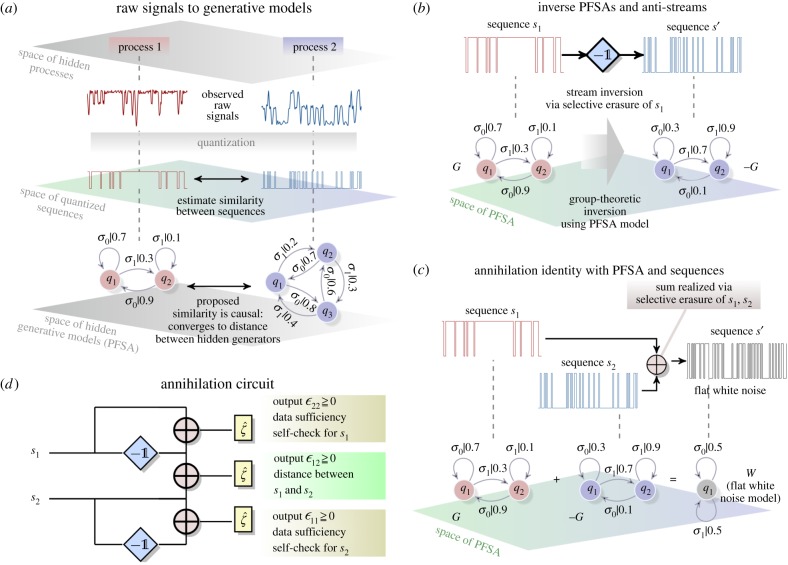Figure 2.
Calculation of causal similarity using data smashing. (a) We quantize raw signals to symbolic sequences over the chosen alphabet and compute a causal similarity between such sequences. The underlying theory is established assuming the existence of generative probabilistic automata for these sequences, but our algorithms do not require explicit model construction, or a priori knowledge of their structures. (b) Concept of stream inversion; while we can find the group inverse of a given PFSA algebraically, we can also transform a generated sequence directly to one that represents the inverse model, without constructing the model itself. (c) Summing PFSAs G and its inverse −G yields the zero PFSA W. We can carry out this smashing purely at the sequence level to get FWN. (d) Circuit that allows us to measure similarity distance between streams s1, s2 via computation of  ,
,  and
and  (see table 1). Given a threshold
(see table 1). Given a threshold  , if
, if  , then we have sufficient data for stream sk (k = 1,2). Additionally, if
, then we have sufficient data for stream sk (k = 1,2). Additionally, if  , then we conclude that s1, s2 have the same stochastic source with high probability (which converges exponentially fast to 1 with length of input). (Online version in colour.)
, then we conclude that s1, s2 have the same stochastic source with high probability (which converges exponentially fast to 1 with length of input). (Online version in colour.)

